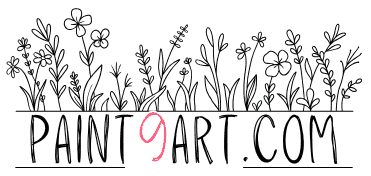This technique comes from Tuula Maaria, a longtime crocheter who has been stitching since the late 1960s. In one of her recent video tutorials, she shared a subtle but effective way to improve the edges of your single crochet fabric.
This isn't about fixing a mistake—it's an alternative method that can, in many cases, result in a cleaner, more refined edge. It’s especially useful in visible parts of your work like scarf edges or the front panels of a cardigan.
Contents
The Standard Single Crochet Turn

Most crocheters learn the conventional way to turn at the end of a row of single crochet:
-
Work the last single crochet in the final stitch of the row.
-
Chain 1.
-
Turn your work.
-
Make the next single crochet into the first stitch.
This is a solid method that produces straight edges and helps avoid accidental increases or decreases.
However, Tuula Maaria suggests a different technique that produces a smoother, tighter edge—and it requires only a minor change.

The No Turning Chain Method for Cleaner Edges
How It Works:
-
Finish your row with a slightly tighter single crochet in the last stitch.
-
Stretch that stitch very gently upward. You don’t want it to be floppy—just give it a little upward pull.
-
Do not chain at the end of the row.
-
Turn your work directly, keeping the working yarn behind the fabric.
-
Begin the new row by working directly into the first stitch.
That's the entire modification. You simply skip the turning chain and make the last stitch of each row a bit tighter with a slight stretch before turning.
Why It Works:
By eliminating the turning chain, you also eliminate the slight “gap” that often forms at the beginning of each row—particularly noticeable in single crochet. Over multiple rows, this technique creates a much smoother, more consistent edge.
Side-by-Side Comparison
When tested side-by-side:
-
The traditional method (with a turning chain) produces a reasonably straight edge, but you may notice tiny holes or gaps where the turning chain sits.
-
The no-chain method results in a tighter and cleaner edge, with no visible gaps—especially helpful in projects where edges are not being seamed or covered.

Applying the Method to Single Crochet Ribbing (Back Loop Only)
In single crochet ribbing, each row is worked into the back loop only to create texture and stretch. The standard approach (ch 1, turn, then work into the first back loop) can leave small holes or inconsistencies at the edges.
Using Tuula Maaria's Method in Ribbing:
-
At the end of the row, work the final stitch tighter than usual.
-
Stretch it slightly, then turn without chaining.
-
Begin the next row by working into the back loop of the first stitch.
-
Continue across the row as normal.
Handling the Last Stitch in Ribbing:
Sometimes, especially after using this method, the back loop of the final stitch may not be easily accessible. In that case:
-
Instead of forcing the hook into the back loop, insert it under the side-facing loop that forms from turning.
-
Work a tight single crochet into that loop.
-
Stretch slightly, turn, and proceed with the next row.
This still maintains the structural integrity and creates a neater edge.

Pro Tip: Combine Both Turning Methods for Functionality
If you're planning to pick up stitches along one edge of your ribbing—for example, to attach sleeves, join to a body panel, or start a hat—Tuula Maaria recommends a hybrid method:
-
Use the no-chain turning method on the visible side for a clean finish.
-
Use the standard turning chain on the joining side, which creates loops that are easier to work into later.
This combination gives you professional-looking edges and practical functionality for shaping or construction.
Tip: Use a stitch marker to keep track of which side is which as you work.
Final Thoughts
Even if you’ve been crocheting for decades—as Tuula Maaria has—there’s always room to learn and refine your technique. The no turning chain method is a small change that can make a noticeable difference in the quality and polish of your finished piece.
So whether you’re making scarves, garments, or accessories, try this technique in your next project and see the results for yourself. It’s a professional-level adjustment that’s simple enough for any crocheter to try.


